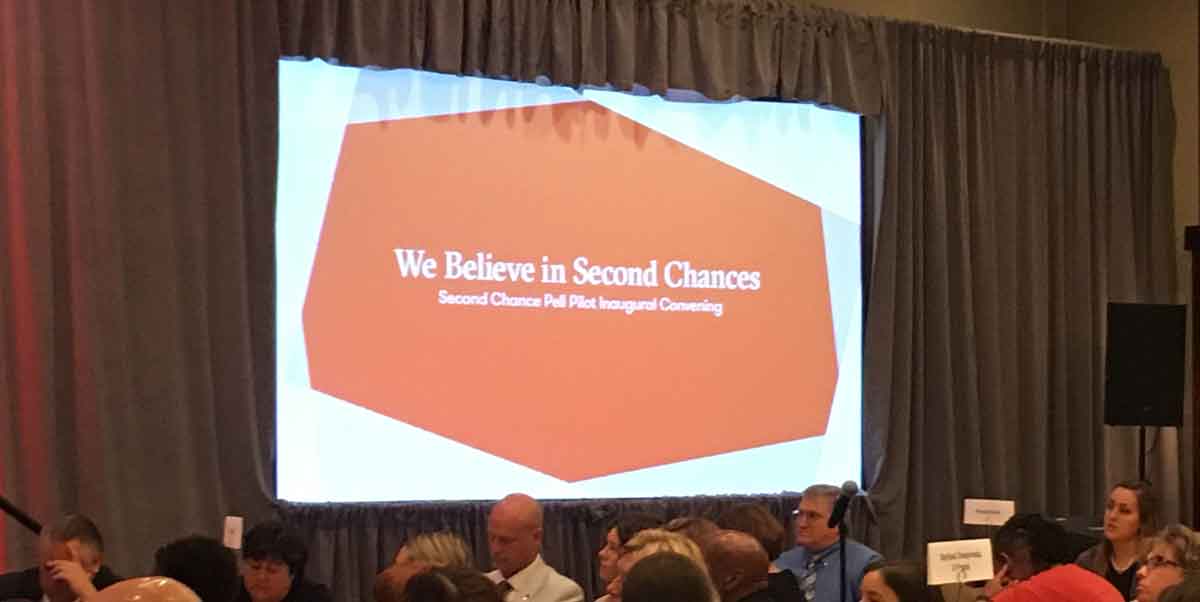WASHINGTON — Two years after Devon Simmons was released from prison, he finished his associate degree — following through on the educational start he got at Federal Correctional Institution in Otisville, N.Y. And Simmons is not stopping there: He plans next to pursue a bachelor’s degree in criminal justice at the John Jay College of the City University of New York.
In all started in 2012, when, while still serving a 15-year sentence, Simmons applied for the Prison-to-College Pipeline, an initiative at CUNY that provides access to higher education to incarcerated and formerly incarcerated people. After Simmons took a CUNY admissions test, interviewed, and submitted essays, he was selected to take classes taught by CUNY faculty at Otisville Correctional Facility, a medium-security federal facility for male inmates.
“My professors definitely trained me and prepared me well for the academic journey that I would endure upon my release,” said Simmons, 34, who was charged with assault in 1999. He said the intense classes gave him an “amazing” experience in prison to learn new things, he said.
At Otisville in Orange County, the incarcerated students use encyclopedias, typewriters, and materials brought in by professors. Inmates are fully engaged in classes — like sociology, criminal justice, public speaking, music, and writing — without “outside distractions,” so there is plenty of time to focus on coursework, Simmons said.
Since 2011, about 50 inmates — ranging from 22 to 52 years old — have been selected for P2CP. While some are still in prison, some have been released and, like Simmons, choose to continue their education.
Michelle Fine, psychology professor at the CUNY and co-author of the 2001 report “Changing Minds: The Impact on College in a Maximum-Security Prison,” said offering educational programs is a “win-win-win strategy:” It reduces tax burden, reduces recidivism, and promotes safer communities.
“College in prison and after prison keeps us all safe,” Fine said. “… People are beginning to understand it’s really the only way to reduce recidivism rate.”
According to a study by the RAND Corp., incarcerated people who participate in prison education programs are 43 percent less likely to go back to prison than those who do not take classes. Only two students participating in P2CP have returned to prison, according to program administrators.
Simmons said the program gives people like him “opportunities to do something positive in such a negative environment.”
College in prison programs dropped off dramatically in the mid-1990s. Amid the “tough-on-crime” sentiment that pervaded public policy conversations a provision in the Violent Crime Control and Law Enforcement Act of 1994 eliminated Pell Grant financial assistance for inmates in federal and states institutions
But last year, the U.S. Department of Education launched the Second Chance Pell Pilot Program, restoring the opportunity for higher education to thousands of inmates in state and federal prisons. This year, the DOE picked 67 colleges and universities to participate in the program.
As many as 12,000 prisoners who meet certain Pell Grant criteria can qualify to take courses online or in prison, provided they are eligible for release within five years of coursework, and the maximum Pell grant is $5,815.
With the Second Chance Pell, the Prison-to-College Pipeline program through CUNY will likely expand; administrators aim to select more than 100 students this fall. In addition to Otisville, another prison will be added to offer classes to inmates in 2017.
“[The program creates] a family atmosphere, a community, a real sense of family and belonging for people,” Baz Dreisinger, academic director of the program, said. “It helps people to think of themselves of being capable of achieving their goals, capable of achieving bigger things in life. It also allows greater communication skills, critical thinking skills.”
“All of these make people better citizens, better family members, and community members.”
Published in conjunction with Sojourners

